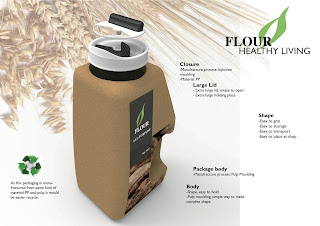- What is the issue you would want to address?
Malnutrition is not a disease, but it is a serious growing issue in society today.
- How significant is this problem/opportunity?
Studies estimated the risk of malnutrition:
• in hospital: 1 in 4 patients1234
• in care homes: 1 in 3 patients12567
• old person living independently : 1 in 3 persons8
The Daily Telegraph reported that1 in 10 elderly people in Britain are at risk of malnutrition. By 2033 it is estimated nearly a quarter of the British population (23 per cent) will be aged over 65 meaning the number of older people suffering from malnutrition is set to rise even further. Public service funding is already overstretched and ill-prepared to meet the challenge of the rising senior population.
The World Health Organization estimates that approximately 150 million children under 5 years in developing countries (26.7%) are malnourished. An additional 200 million children have stunted height. According to the FAO (The United Nations Food and Agriculture Organization), poor nutrition plays a role in 50% of the 10.9 million child deaths each year.
The cause of disease related malnutrition is often due to people have problems with shopping or cooking, especially for elderly who lives by themselves; problems with eating, people reduce their taste ability; and circumstances where, nutrition availability. 9
- Who (Which users) would benefit from this proposal?
Children and elderly would benefit from this proposal. Good nutrition that is important for both physical and emotional wellbeing as well as maintaining independence.
- What specific needs of these users require addressing or present a design opportunity?
For this proposal, new lifestyle demonstrating product for the ageing demographic, meeting a growing market opportunity. It will focus on the elderly who lives alone, and how they can live their life with good nutrition in convenient way through design a better household appliances, food repackage, product service system.
REFERENCES
1. Meijers JM, Schols JM, van Bokhorst-de van der Schueren MA, Dassen T, Janssen MA, Halfens RJ. Malnutrition prevalence in The Netherlands: results of the annual Dutch national prevalence measurement of care problems. Br J Nutr 2009; 101(3):417-423.
2. Russell C, Elia M. Nutrition screening survey and audit of adults on admission to hospitals, care homes and mental health units. 2008. Redditch, BAPEN.
3. Imoberdorf R, Meier R, Krebs P, Hangartner PJ, Hess B, Staubli M et al. Prevalence of undernutrition on admission to Swiss hospitals. Clin Nutr 2010; 29(1):38-41.
4. Kruizenga HM, Wierdsma NJ, van Bokhorst MA, de vdS, Hollander HJ, Jonkers-Schuitema CF et al. Screening of nutritional status in The Netherlands. Clin Nutr 2003; 22(2):147-152
5. Suominen MH, Sandelin E, Soini H, Pitkala KH. How well do nurses recognize malnutrition in elderly patients? Eur J Clin Nutr 2009; 63(2):292-296.
6. Lelovics Z, Bozo RK, Lampek K, Figler M. Results of nutritional screening in institutionalized elderly in Hungary. Arch Gerontol Geriatr 2009; 49(1):190-196.
7. Parsons EL, Stratton RJ, Elia M. An audit of the use of oral nutritional supplements in care homes in Hampshire. Proc Nutr Soc 2010; 69:E197.
8. Kaiser MJ, Bauer JM, Ramsch C, Uter W, Guigoz Y, Cederholm T et al. Frequency of malnutrition in older adults: a multinational perspective using the mini nutritional assessment. J Am Geriatr Soc 2010; 58(9):1734-1738.
9. "Background of Malnutrition." - Frailty and Disease Related Malnutrition. N.p., n.d. Web. 26 Oct. 2013.
APPROACH
As my personal experiences, my family
live separately around the world, even some of us live in same country, with
different cities. My grandparents have many children, but none of them can live
with them. There are so many inconveniences in their daily life, but we cannot
stay with them everyday. So designing a product, which can at least make sure
their physical wellbeing, is what I want to do.






























































